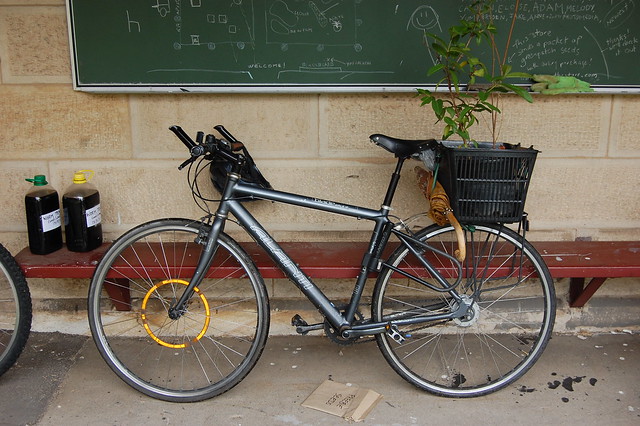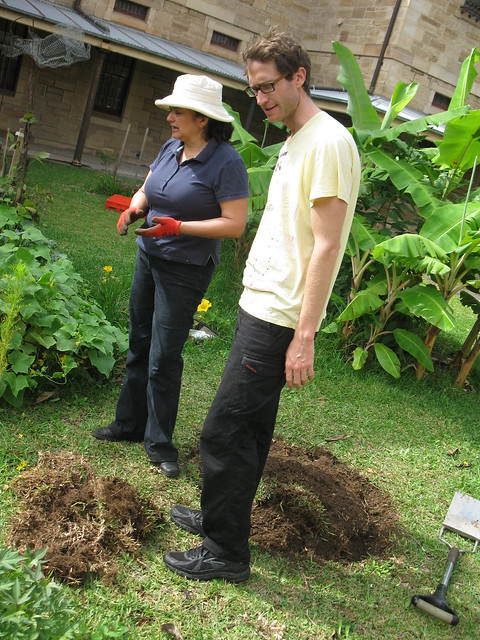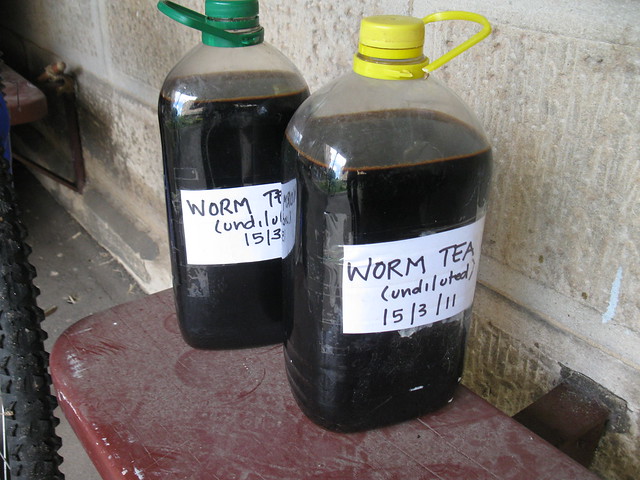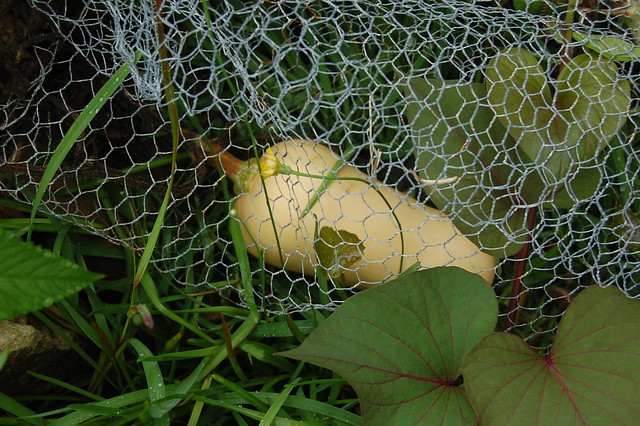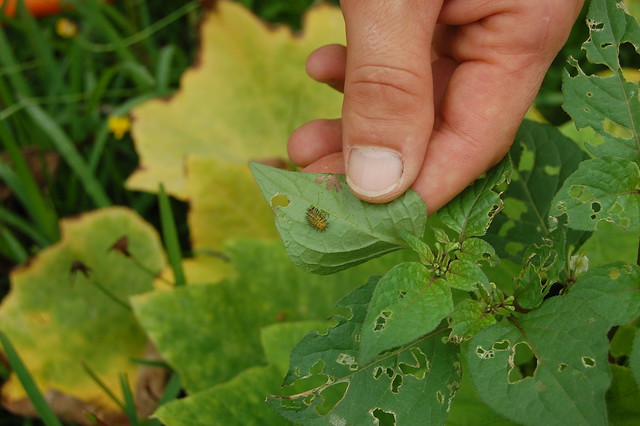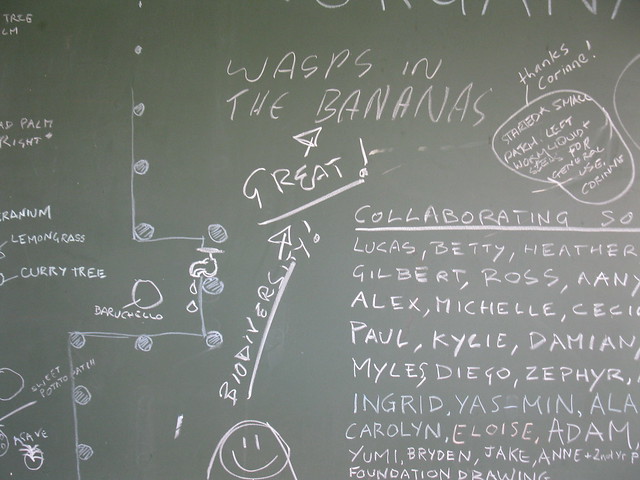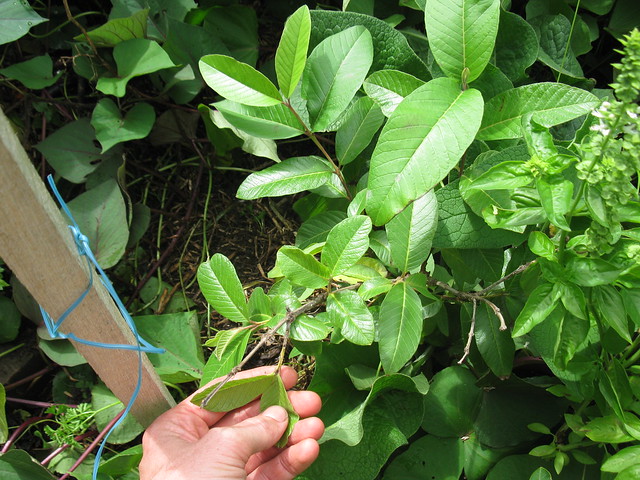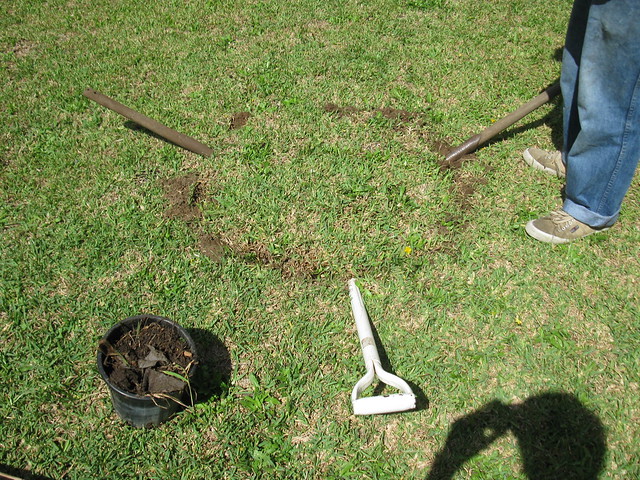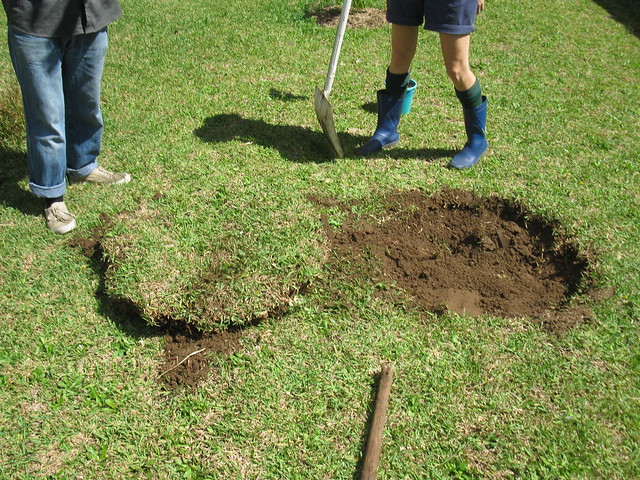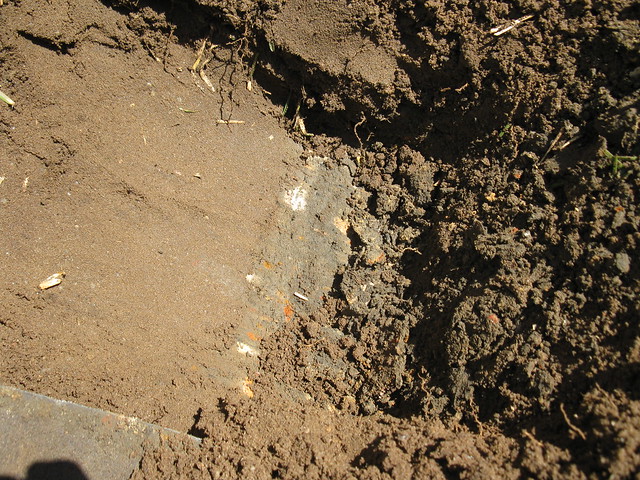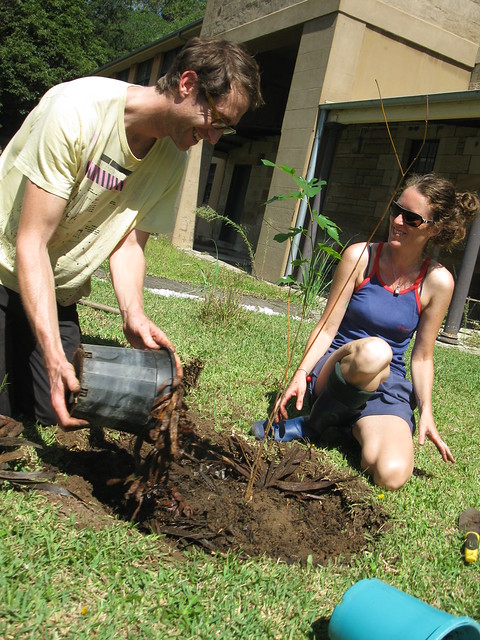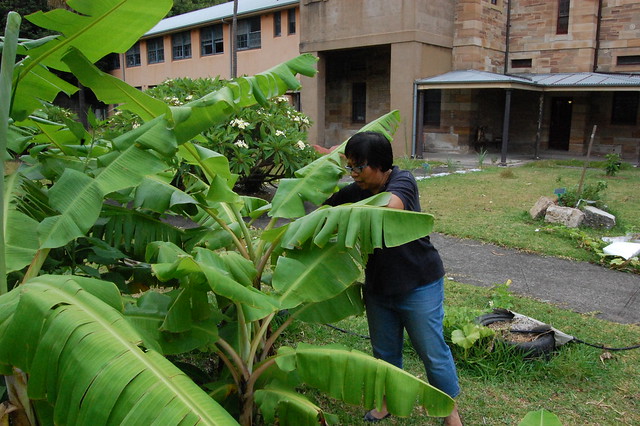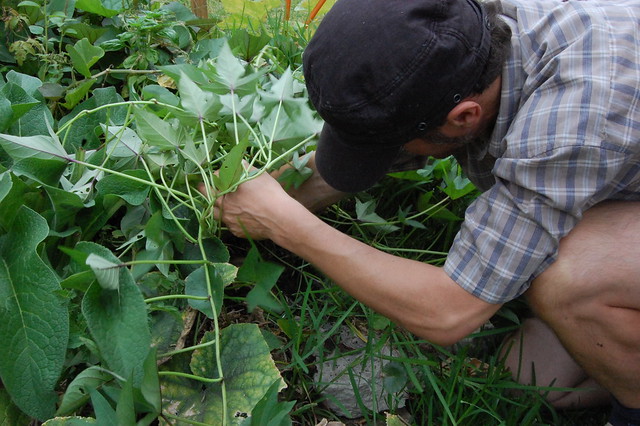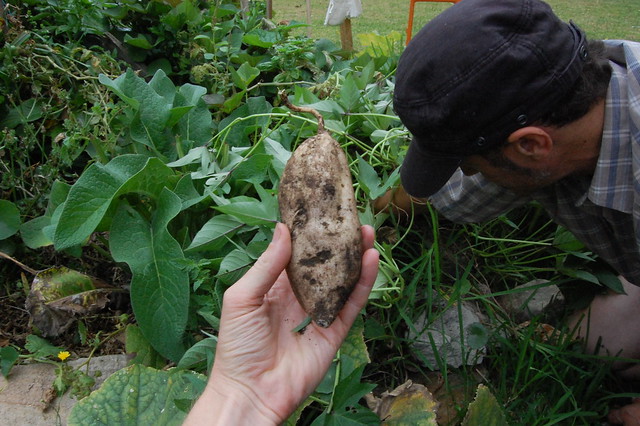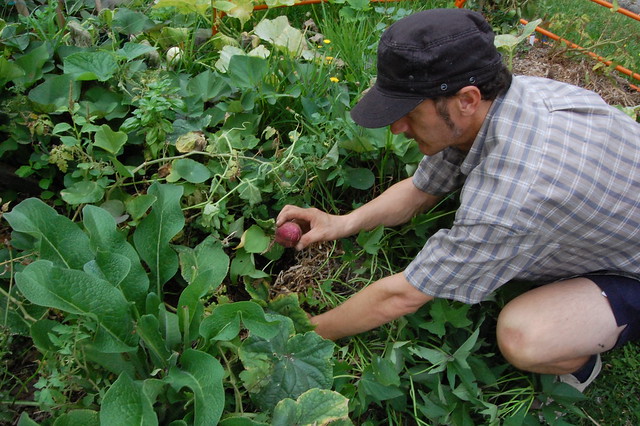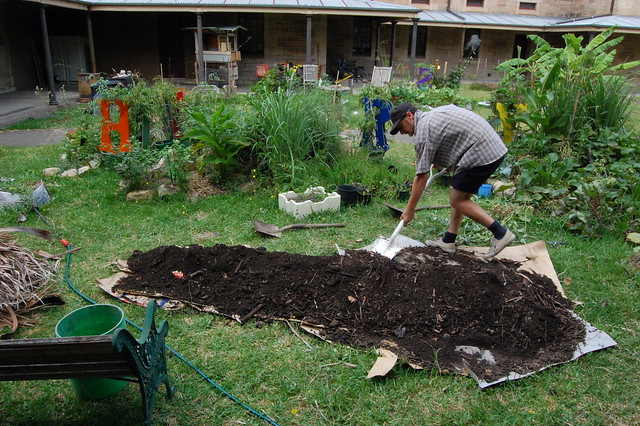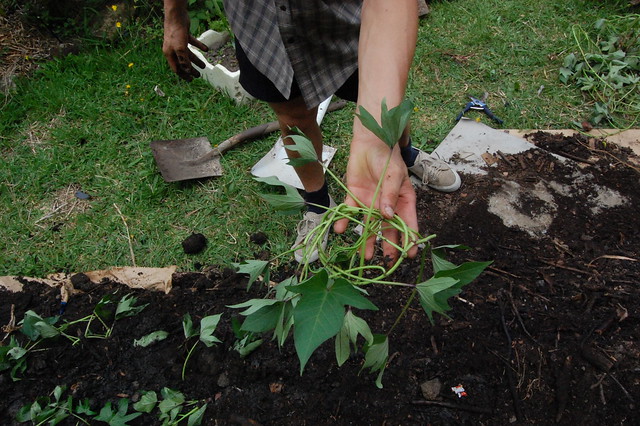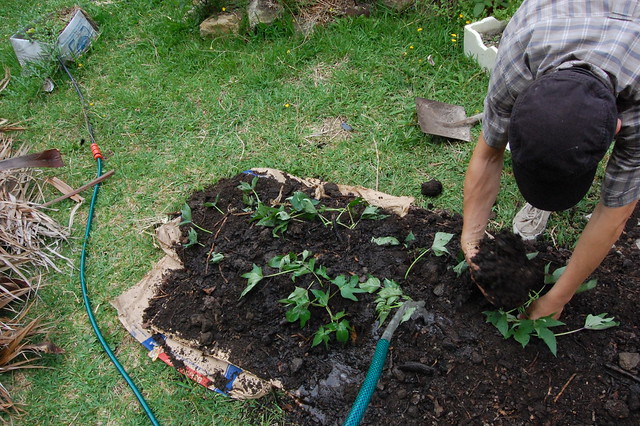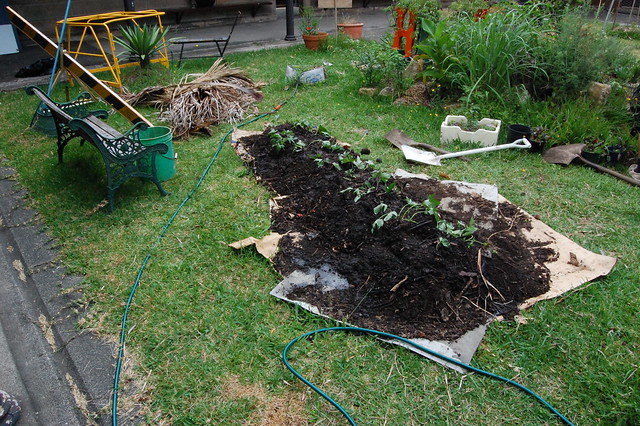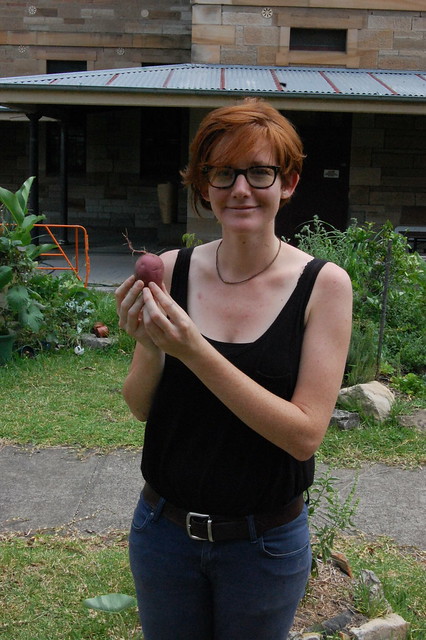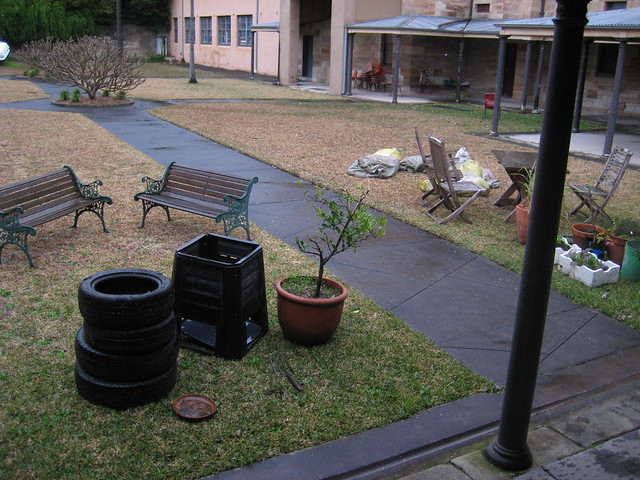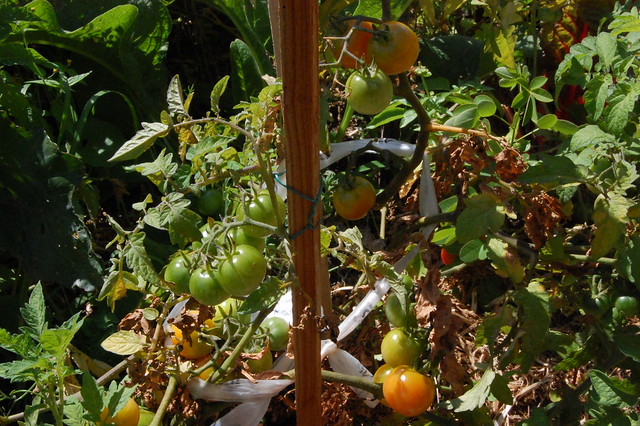[LUCAS]:
A few years ago, my gardening buddy Lisa Kelly did a project called The Lively Plane. It was all about Plane Trees, also known as London Plane Trees. These are the deciduous fellows you see planted around the streets of inner Sydney, they grow big and tall, they are very resilient to soil compaction, they filter summer light and let in the winter light, they drop huge quantities of seedpods which get up everyone’s allergic noses, they’re loved and hated.
Lisa collected a large quantity of fallen Plane seeds, and lovingly hand-germinated them. The germination rate wasn’t high, but enough survived for her to raise a small army of potted trees.
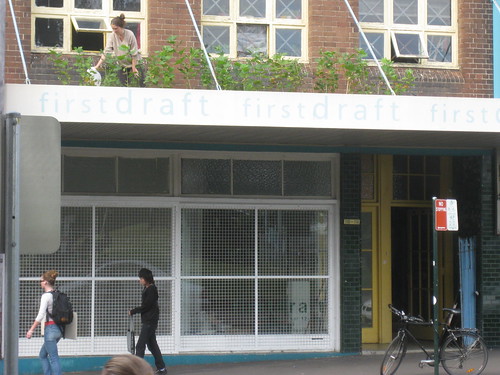
[Lisa watering her Plane Trees, on the balcony of her studio above First Draft Gallery, early 2009]
These were exhibited as part of the exhibition There Goes the Neighbourhood at Performance Space, and many of the potted saplings were distributed to friends and interested visitors after the show finished. (Here’s a page on Lisa’s blog about the project…)
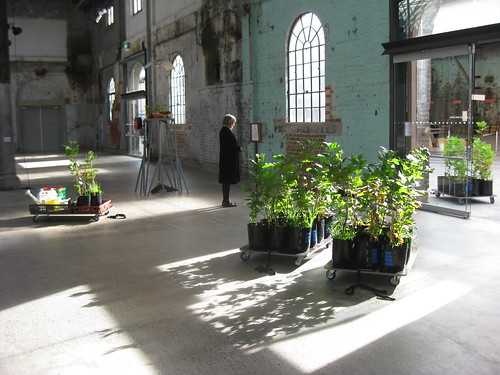
[Lisa Kelly installation view at Performance Space, 2009]
On a recent visit to Lisa’s yard, she showed me that one of her planes has now naughtily “transcended” its pot, put roots in the soil and shot 9 feet in the air. This could potentially become a problem… But I digress…
The main point of this story is coming! So, the other thing that Lisa brought along to her project was a fascination with these particular steel “tree guards” which she had noticed down at The Block in Redfern. They were kind of modernist in design, but hand-made, not standard council issue. They were designed, it seemed, to stop trees being chopped or run over. Lisa studied them, measured them, and drew up plans for a re-fabrication of them by a local ironmonger. The re-issued tree-guards joined the budding plane trees in the exhibition:
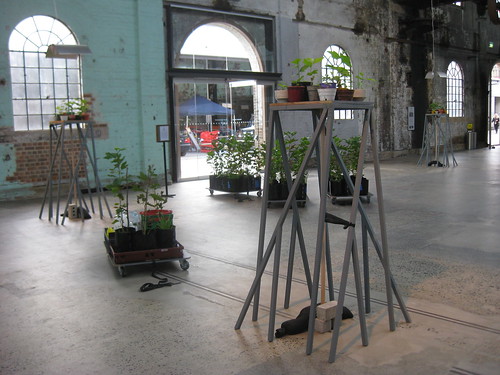
But, like the few plane trees which didn’t find new homes, the steel tree guards ended up in Lisa’s backyard, where they’ve been cheerfully rusting ever since.
Lisa and I decided they could probably find a new life with us at TENDING, (aka refugee reception centre for botanical art projects). So a few weeks back, we schlepped them over with a ute. Lisa, in her mindful, unhurried way, spent the day with us, pottering about, keeping the tree guards in the corner of her eye they whole time, waiting for the moment when their true potential would be revealed. And then, towards the end of the afternoon, she knew what to do:
Three tree guards, three existing tall palm trees. Bingo.
So we set about reconstructing the guards around the palms:
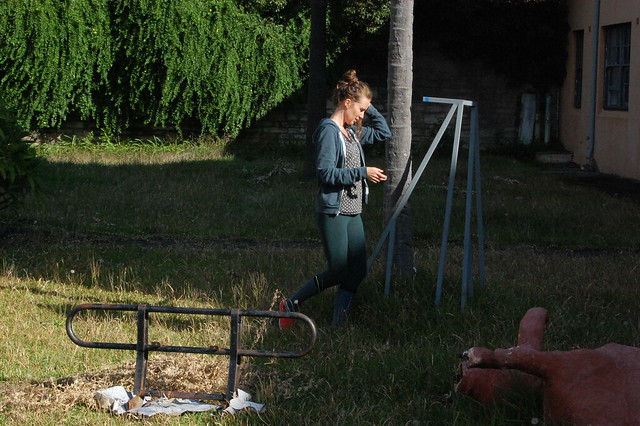
The tree guards come in two pieces and slot together.
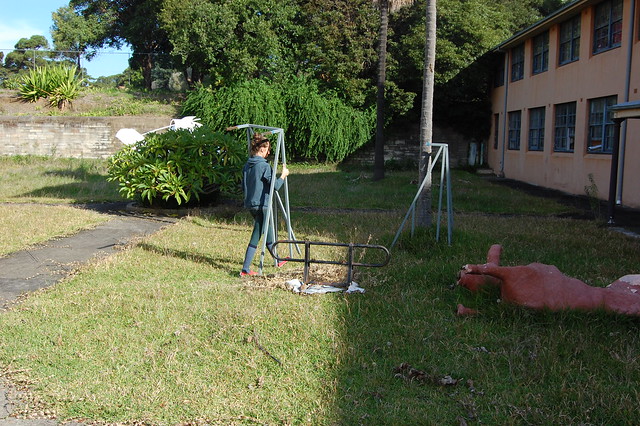
The second half slots into place.
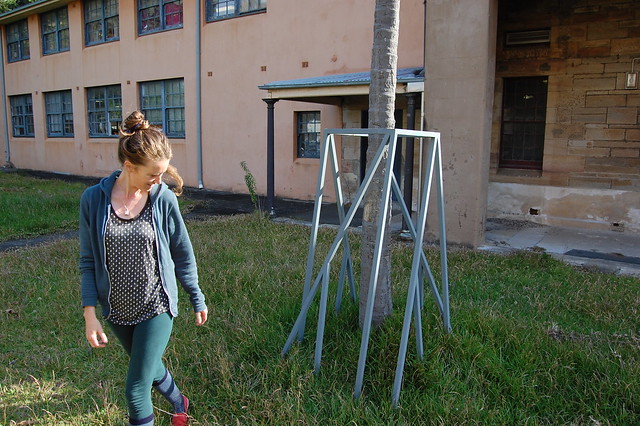
Quite pleased with this odd but fitting combination…
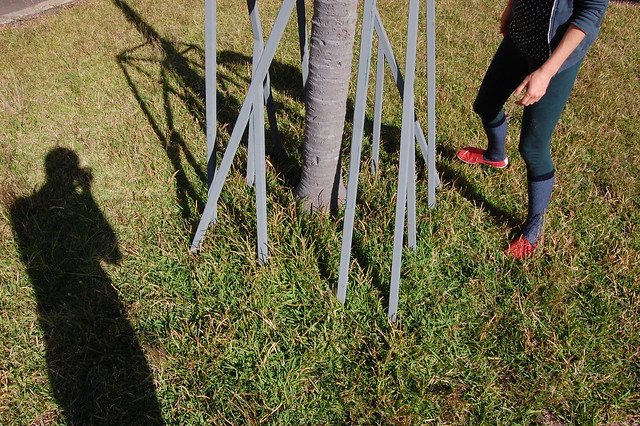
Photographer’s shadow, palm tree’s trunk, tree guard’s legs, artist’s legs…
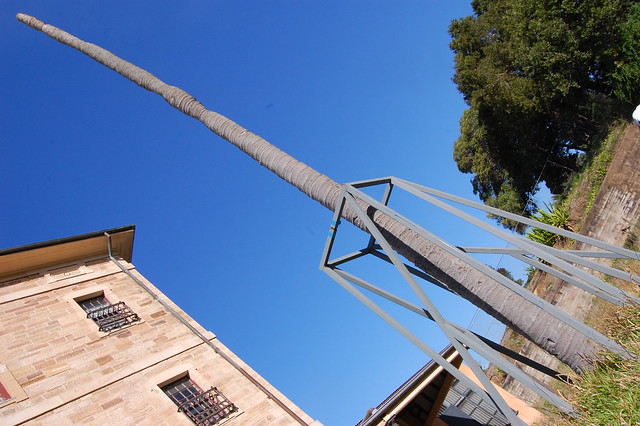
The framed obelisk…
When we had finished installing the third tree guard, we were inspecting and admiring our handywork. I guess we had never really paid much attention to these sorry looking palm trees before – especially since they seemed a bit sickly – their foliage had dropped off a few months ago during a storm, so they were just these strange misplaced wooden columns. But perhaps it was the fact that the tree guards framed the columns so nicely that made us look more closely.
And what we found was this: initials and dates, deeply inscribed on the trees.
REALLY OLD dates:
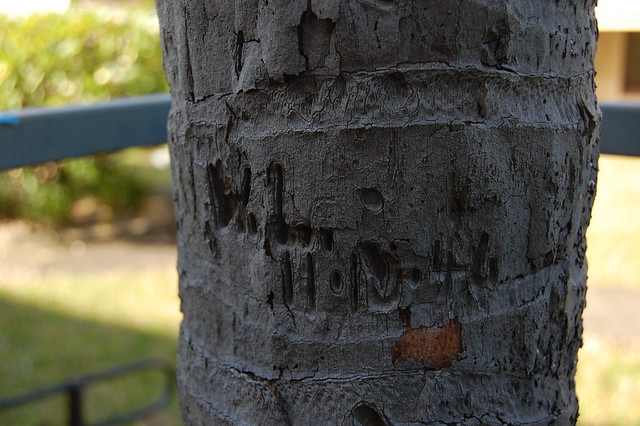
W.L. 11.10.44
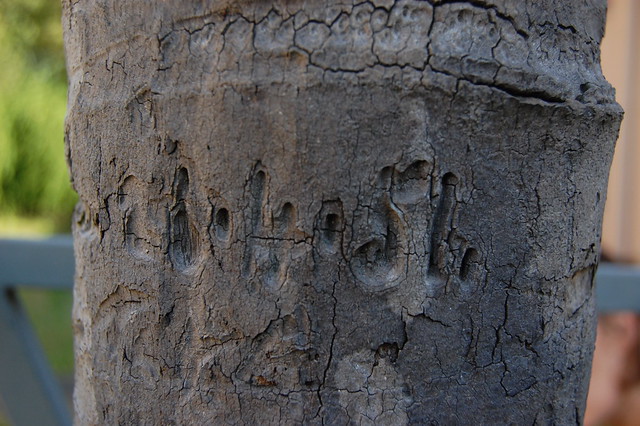
1.4.56
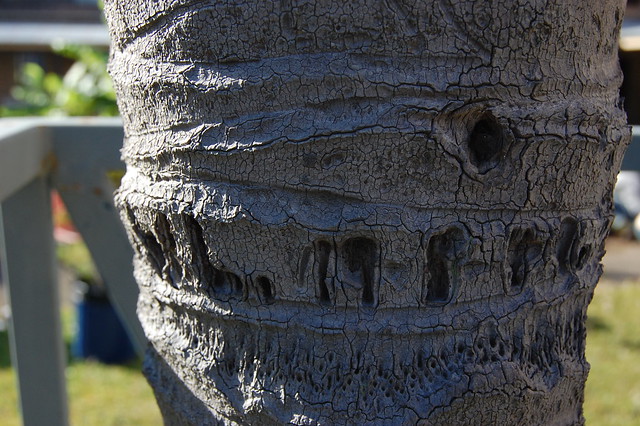
W.L. 19-8-44

DW 1.12.44
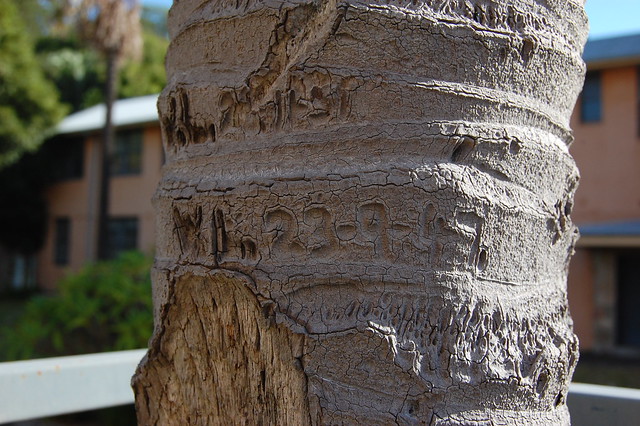
WL 23-7-47
Who were W.L. and D.W.?
…and what was going on for them in these decades, during and after the war?
Some visitors to the garden have mentioned that the SCA Library, which is right next to us, was the former housing quarters for some of the most intractable inpatients of the mental hospital (which is what the art college used to be.
What did W.L and D.W. think about? And what did they do, as they roamed the grounds?
– – –
(Lisa has posted some of these images to her own blog too…)

